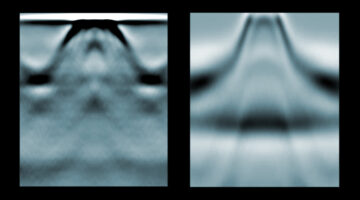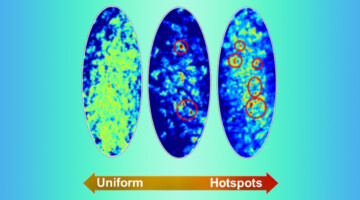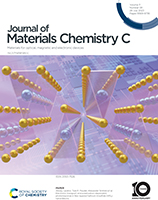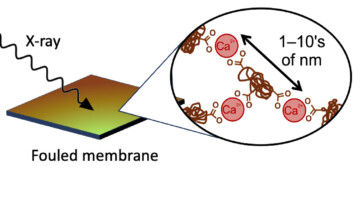Researchers synthesized a new two-dimensional ferromagnet and measured how its electronic and magnetic properties evolve with increasing thickness and temperature. Such atomically thin magnetic materials with tunable magnetic properties would be very useful in next-generation microelectronic and spintronic applications. Read more »
Accelerating Sustainable Semiconductors With ‘Multielement Ink’
Scientists have developed “multielement ink”—the first “high-entropy” semiconductor that can be processed at low temperature or room temperature. The new semiconducting material could accelerate the sustainable production of next-gen microelectronics, photovoltaics, solid state lighting, and display devices. Read more »
Insight into How Thermoresponsive Nanomaterials Work
By combining soft x-ray scattering with electron microscopy, researchers learned how nanoscale polymer assemblies in solution restructure in response to heating. The approach can be generalized to many complex, solution-phase, nanoscale processes, and holds promise for driving advances in applications from drug delivery to catalysis. Read more »![]()
![]()
Will Chueh to Receive the 2023 Shirley Award
Will Chueh of Stanford University is the 2023 winner of the Shirley award for Outstanding Scientific Achievement at the ALS. His selection recognizes Chueh’s deep contributions in operando soft x-ray spectromicroscopy for imaging electrochemical redox phenomena—images and movies for battery and electrocatalytic reactions. Read more »
Fluctuations Mark Phase Changes in Magnetic Films
Researchers discovered that nanoscale spin fluctuations deep inside ordered states of a magnetic film can characterize phase transitions, independent of underlying magnetic interactions. The results provide a new way to predict and understand phase transitions in materials relevant to high-density, energy-efficient microelectronics. Read more »![]()
![]()
Controlling the Structure and Morphology of Organic Nanofilaments Using External Stimuli
Coexisting organic helical and helicoidal crystalline nanofilaments formed by molecules with a bent molecular shape can now be transformed to a smectic liquid crystal phase or only helical nanofilaments by applying an electric field or irradiating the sample with UV light. Read more »
ALS Work on Roman Concrete Highlighted in German-French Documentary
A study on the remarkable durability of 2000-year old Roman concrete, by ALS user Marie Jackson with ALS beamline scientist Nobumichi Tamura, was recently highlighted in “Miracle Materials,” a science documentary produced by a German-French company, Gruppe 5, for airing on the Eurpean public service channel, ARTE. Read more »
Electronic transport and polarization-dependent photoresponse in few-layered hafnium trisulfide (HfS3) nanoribbons
We report on the electrical and optoelectronic characterization of field-effect transistor (FET) devices based on few-layered HfS3 nanoribbons. The results support the contention that in the presence of light, the photocarriers include both electrons and holes, enhancing the photocurrent of devices. Read more »
Making Renewable, Infinitely Recyclable Plastics Using Bacteria
Scientists engineered microbes to make the ingredients for recyclable plastics—replacing finite, polluting petrochemicals with sustainable alternatives. The new approach shows that renewable, recyclable plastics are not only possible, but also outperform those from petrochemicals. Read more »
Keeping Water-Treatment Membranes from Fouling Out
When you use a membrane for water treatment, junk builds up on the membrane surface—a process called fouling—which makes the treatment less efficient. In this work, researchers studied how membranes are fouled by interactions between natural organic matter and positively charged ions commonly found in water. Read more »
- « Previous Page
- 1
- 2
- 3
- 4
- …
- 24
- Next Page »








